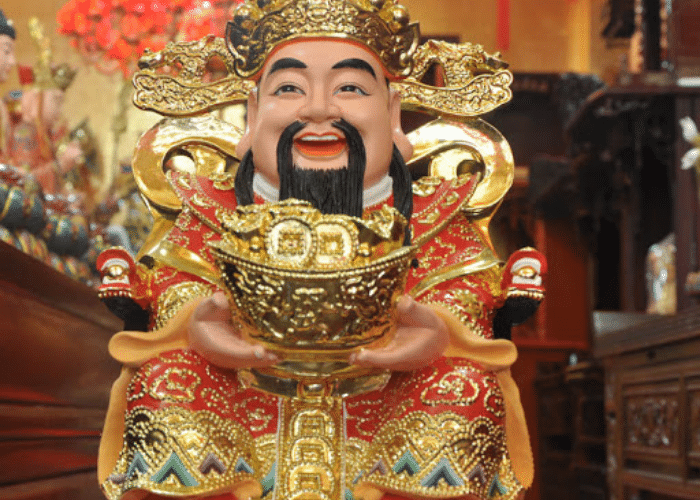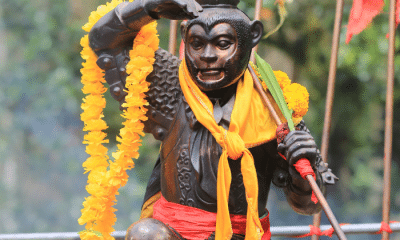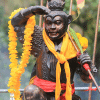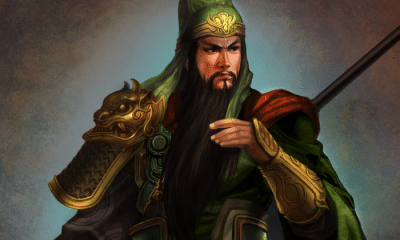
Chinese
Caishen: The Chinese God of Wealth
Caishen: The Chinese God of Wealth
If you’ve ever wished for prosperity on New Year’s Day, you might have been invoking the Chinese god of wealth. Keep reading to find out about the origins of Caishen and why he is so popular in modern celebrations.
The Chinese New Year is marked by fireworks, parades, and family gatherings. It also involves prayers to many of the culture’s most important gods.
During the New Year festivities, the name Caishen is one of the most frequently invoked. People hope to earn the blessings of the god of wealth in the coming year.
Caishen has been invoked by rich and poor alike for centuries, but no one can agree on where the god’s cult started.
Nearly every region of China has its own origin story for Caishen. While the most popular places him in the semi-mythical Shang Dynasty, stories of Caishen’s human life take many forms.
Some people believe that the god of wealth may have been reincarnated to serve more people. Others, however, think that the god’s vague origins ensure that no single place has a better claim to wealth than any other.
Caishen and the Spread of Wealth
In Chinese folk religion and in Taoist traditions, Caishen is one of the most often invoked deities.
He is the god of wealth and financial prosperity.
Caishen is most often shown riding a black and white tiger. He carries a large cudgel and, often, a golden rod.
Caishen’s weapon is not for use in war or to punish those who do wrong, however. Instead, he uses it to bring prosperity to those he favors.
The magical cudgel of Caishen can turn iron into gold. With a single blow, he can make a simple tool or rod into a source of riches.
Like most Taoist deities, Caishen began his life as a human. His exact identification, however, is a topic of debate.
Different time periods and regions have their own origin stories for Caishen. As a result, his human origins are so varied that a different aspect of the god of wealth exists for all nine directions!
The most common story, however, is that Caishen lived during the time of the legendary Shang Dynasty in the 2nd millennium BC.
Caishen was born with the name Bi Gan. He lived an uneventful life that was notable only because of his wife’s connections.
His wife is identified only by her family name, Chen. Her nephew was King Zhou of Shang, who was known in his lifetime as Emperor Xin.
The king was quick-witted, but he was also quick-tempered. He became known for his debauchery and the cruelty with which he dealt with anyone who crossed him.
King Zhou turned on his aunt’s husband, who opposed his behavior. He ordered Bi Gan and his family to be put to death.
Bi Gan was captured and executed. His wife and their son Quan, however, escaped into the forest.
The execution of Bi Gan, however, marked the beginning of the end of the reign of King Zhou and the Shang Dynasty. He was soon overthrown by King Wu, the first ruler of the Zhou Dynasty.
Under King Wu, Bi Gan’s surviving family members were honored. Quan was given the name Lin, “Forest,” and all people with that family name are descended from him.
Another story claimed that Caishen, under the name Caibo Xingjun was once a rural magistrate by the name of Li Guizu. He brought so much prosperity to his province that the people built a temple in his honor after his death and he was officially deified under the Tang Dynasty.
My Modern Interpretation
The stories of Bi Gan and Li Guizu are just two of the many origins given for the god of wealth. Other aspects of the god, ruling over specific domains such as gold, profit, and military wealth, are associated with even more historical figures.
Some people have reconciled these varied legends by claiming the Bi Gan was reincarnated several times through the ages.
In these reincarnations, he earned the position of the god of wealth. While the original figure of Bi Gan was not clearly linked to money, successive reincarnations saw him display more and more skill in creating, collecting, and attracting riches.
Another possible interpretation, however, is that the different legends of Caishen reflect a variety of older traditions.
Each version of Caishen’s story takes place in a specific area. This is not unusual among Chinese gods, and the traditional homes of the gods are thought to be the most favored by them as the center of their worship.
Every area, however, had a vested interest in receiving the particular attention of the god of wealth.
If a region did not already have a Caishen, they would not want their neighbor to have a greater claim to wealth than they did. Meanwhile, the name, which literally translates to “God of Wealth,” could be easily applied to any deity with a similar domain without issue.
The popularity of Bi Gan’s story may, in fact, be that it is one of the few that does not specify a location. Bi Gan’s time period is given, but the city and province in which he lived are not named.
The only people who would have any special claim to this origin myth are those with the last name Lin, who are believed to descend from his son.
Lin is currently the 18th most common family name in mainland China, however. Lin and its variants are also widely used in Korea, Vietnam, Thailand, Singapore, and the Philippines. In Japan, the same characters are used to write that country’s 19th most common name.
In mainland China alone, over 20 million people are members of the Lin family.
The name is so commonly used that the family linkage does little to give any group a significant claim to the god of wealth.
Instead, the entire country can invoke Caishen in equal measure. They do this, typically, during New Year’s celebrations.
The New Year is one of the most important festivals in China, regardless of religion or region. And during the festivities, Caishen is invoked more than any other god.
It is believed that called on Caishen will help to guarantee prosperity in the coming year. His symbolism, however, shows that invoking the god is not enough to attract wealth.
While Caishen can help people attract money, the tiger he rides may symbolize that more must be done to ensure financial prosperity.
Tigers symbolize many attributes and values in Chinese art. One of these, however, is persistence.
Caishen may grant the favor of wealth, but by riding a tiger he shows that a god cannot be relied on alone to bring such fortune. Persistence, diligence, and hard work are just as important as Caishen’s cudgel in attracting riches in the New Year and beyond.
In Summary
In Taoism and Chinese folklore, Caishen is revered as the god of wealth. He rides a tiger and uses a magical cudgel to turn iron into gold.
Caishen is one of the most widely-invoked Chinese gods, particularly during the celebrations surrounding the New Year, but his origin story is far less concrete than his current form.
Many legends claim to recount the human life of Caishen before he was deified. The most common says that he has been blessing the people of China since the 2nd millennium BC.
Many people identify Caishen as a man named Bi Gan who lived under the reign of the cruel King Zhou of Shang. The king had Bi Gan wrongfully executed, and his fall from power is often interpreted as punishment for this killing.
While the story of Bi Gan does not tie Caishen to any one province or city, it does connect him to a family. His son became the ancestor of all people named Lin, accounting for over 20 million people in mainland China alone today.
The story of Bi Gan does not tie the god to any one location, as is often the case with Chinese deities. This ensures that no single place can claim a stronger blessing of wealth than another.









